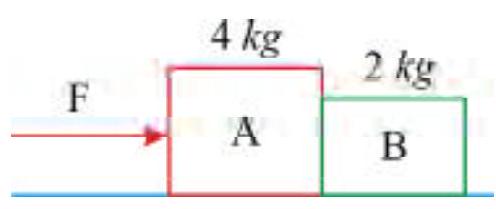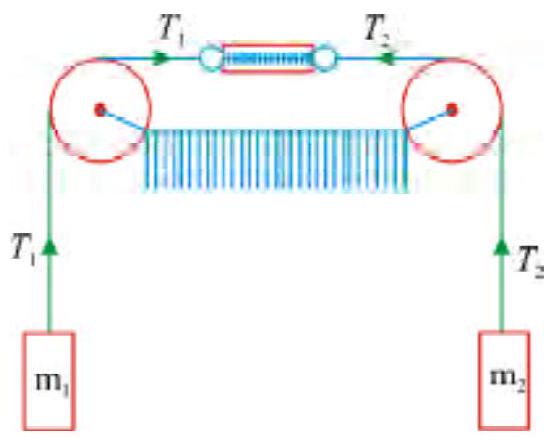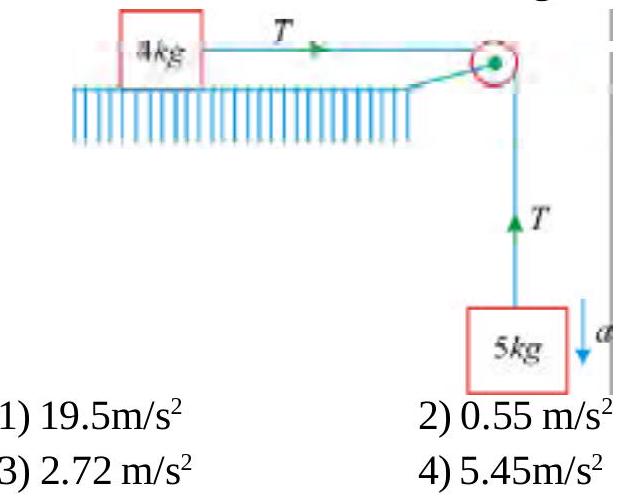270155
A horizontal force \(F\) pushes a \(4 \mathrm{~kg}\) block (A) which pushes against a \(2 \mathrm{~kg}\) block (B) as shown. The blocks have an acceleration of \(3 \mathrm{~m} / \mathrm{s}^{2}\) to the right. There is no friction between the blocks and the surfaces on which they slide. What is the net force \(B\) exerts on \(A\) ?

270155
A horizontal force \(F\) pushes a \(4 \mathrm{~kg}\) block (A) which pushes against a \(2 \mathrm{~kg}\) block (B) as shown. The blocks have an acceleration of \(3 \mathrm{~m} / \mathrm{s}^{2}\) to the right. There is no friction between the blocks and the surfaces on which they slide. What is the net force \(B\) exerts on \(A\) ?

270155
A horizontal force \(F\) pushes a \(4 \mathrm{~kg}\) block (A) which pushes against a \(2 \mathrm{~kg}\) block (B) as shown. The blocks have an acceleration of \(3 \mathrm{~m} / \mathrm{s}^{2}\) to the right. There is no friction between the blocks and the surfaces on which they slide. What is the net force \(B\) exerts on \(A\) ?

270155
A horizontal force \(F\) pushes a \(4 \mathrm{~kg}\) block (A) which pushes against a \(2 \mathrm{~kg}\) block (B) as shown. The blocks have an acceleration of \(3 \mathrm{~m} / \mathrm{s}^{2}\) to the right. There is no friction between the blocks and the surfaces on which they slide. What is the net force \(B\) exerts on \(A\) ?



